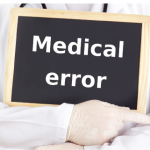
Consider this scenario: A research paper is written by two highly respected academics; one is a professor of law and economics at a prestigious university and the other is the dean of the business school at another major university. Entitled, “Competition in the Mutual Fund Industry: Evidence and Implications for Policy,” the paper lays out a strong defense of the mutual fund industry’s position on the pricing of fees for their services.1 Critics were accusing some mutual fund managers of gouging clients by charging them excessive fees. The professors countered that it would be impossible for fund managers to overcharge clients because their field was so highly competitive. After all, fund investors may, “fire advisers at any time by redeeming shares and switching into other investments.” The 36,000-word paper is elegantly written and provides a strong analytical argument in support of their conclusions. Buried in the fine print of the acknowledgments section, the authors thank many of their colleagues for their helpful comments, conversations, and data analysis. They casually acknowledge the Investment Company Institute (ICI), ICI Mutual, and the John M. Olin Center for Law, Economics, and Business at Harvard Law School for “providing financial assistance.” One of the authors is listed as having testified as an expert witness for a mutual-fund advisory company.
Though this paper is replete with a dizzying array of data, statistical analyses, and high-level calculus, there are no clues that hint at the degree of support they received from the mutual-fund industry. According to an article in the New York Times, the lead author, John C. Coates, IV, professor of law and economics at Harvard Law School in Cambridge, Mass., did not receive any financial support for his work.2 He stated that, as a matter of personal policy, he did not accept money in such circumstances for academic work. In contrast, the second author, R. Glenn Hubbard, dean and Russell L. Carson professor of finance and economics at the Graduate School of Business of Columbia University in New York City, appeared to have no qualms about accepting a $150,000 honorarium from the mutual-fund industry. In response to an e-mail request from the Times reporter seeking clarification for the size of this payment, Hubbard replied: “Any work of scholarship rises or falls on its ideas, empirical support, and argument. Readers can then make whatever judgment they wish.”
The Times They Are a-Changing
Unfortunately for Professor Hubbard, his views on conflicts of interest (COIs) and transparency are woefully out of date. There is mounting concern that many academic and research activities lack transparency. In other words, there are too many “unknown unknowns.” Though changes in the rules and regulations pertaining to the management of conflicts have been moving at a glacial pace at some elite American business and law schools, this has not been the case for most medical schools and academic medical centers, where the need for more transparency has taken on a critical sense of urgency.

